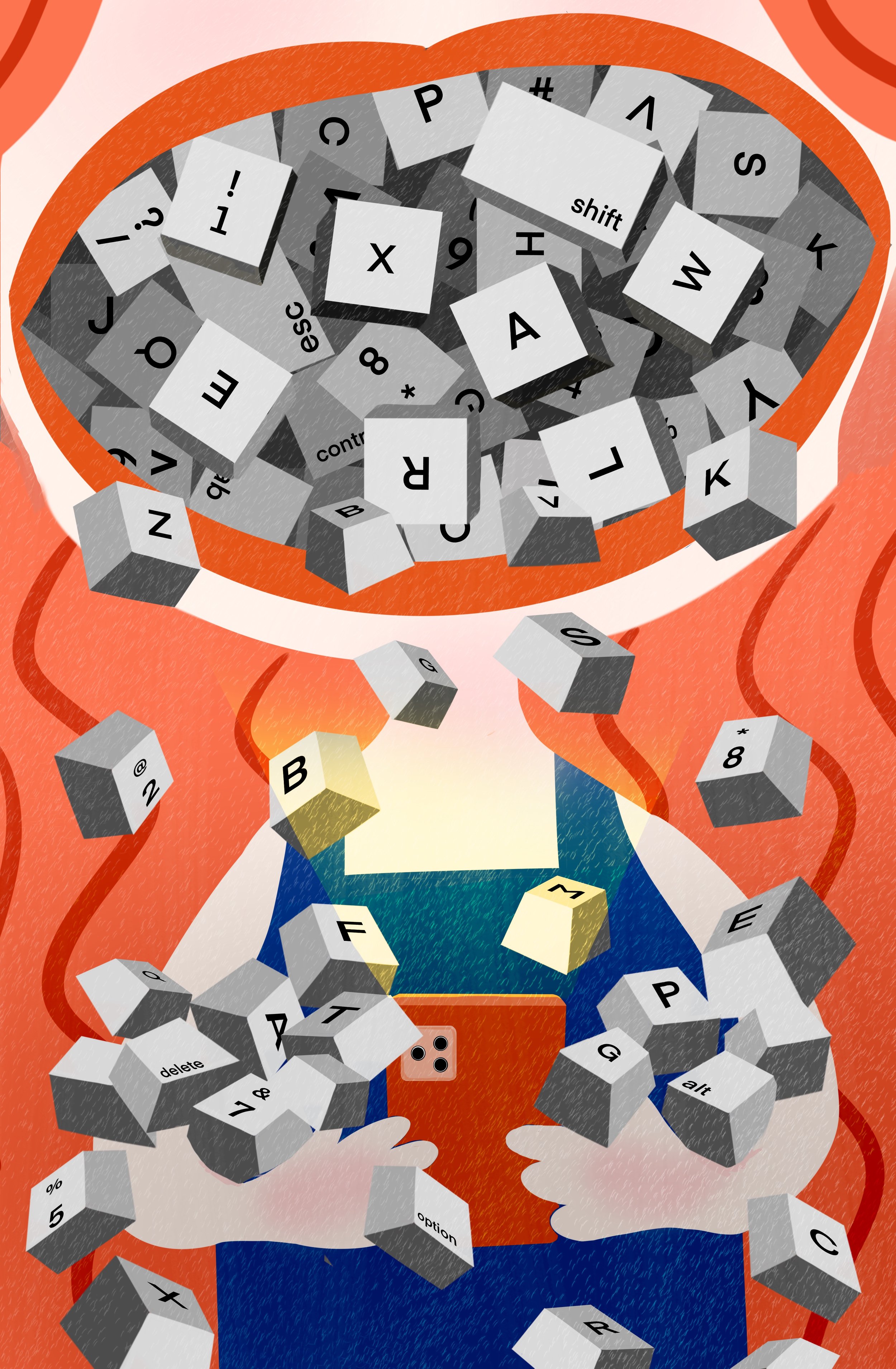
TEn Editorial Illustrations
I have created a series of ten editorial illustrations, each based on an article that explores the intersection of technology and social issues. These pieces aim to visually interpret and highlight the key themes and discussions presented in the articles, offering a creative perspective on the complex relationship between technological advancements and societal challenges.

The article delves into the phenomenon of excessive online shopping among the elderly, exploring its implications and underlying causes.

This article is about young people who get textual aphasia because they spend a lot of time typing and chatting on their cell phones. Word aphasia is when you don't know how to verbalize your thoughts in reality.

The article is about privacy Concerns in Smart Homes which reveals the Potential Threats and Impacts of Smart Home Devices on Personal Privacy.

The article is about symptoms of affluenza include a myopic focus on earning money, strained personal relationships, depression, a self-image tied directly to financial status, and difficulty interacting with or relating to others.

The article delves into the issue of appearance-related depression, examining its causes, impact, and societal influences.

The article examines the concept of the 'pink tax,' shedding light on how products and services targeted at women often come with higher prices compared to similar items marketed towards men.

The article is about a liquid society reflects the dynamic, interconnected, and often unpredictable nature of contemporary social interactions and the need for adaptability in a rapidly evolving world.

The article is about future self-driving vehicles might face dangers if hackers illegally enter their control systems. This can lead to controlling the cars or stealing data, risking safety, causing accidents, or leaking personal info.

The article explores the significant pressures faced by men within marriage, particularly focusing on the financial burdens associated with thing like purchasing a home, acquiring a car, and raising children.

The article is about the scarcity effect is a cognitive bias that causes people to value something more when it is less available.
